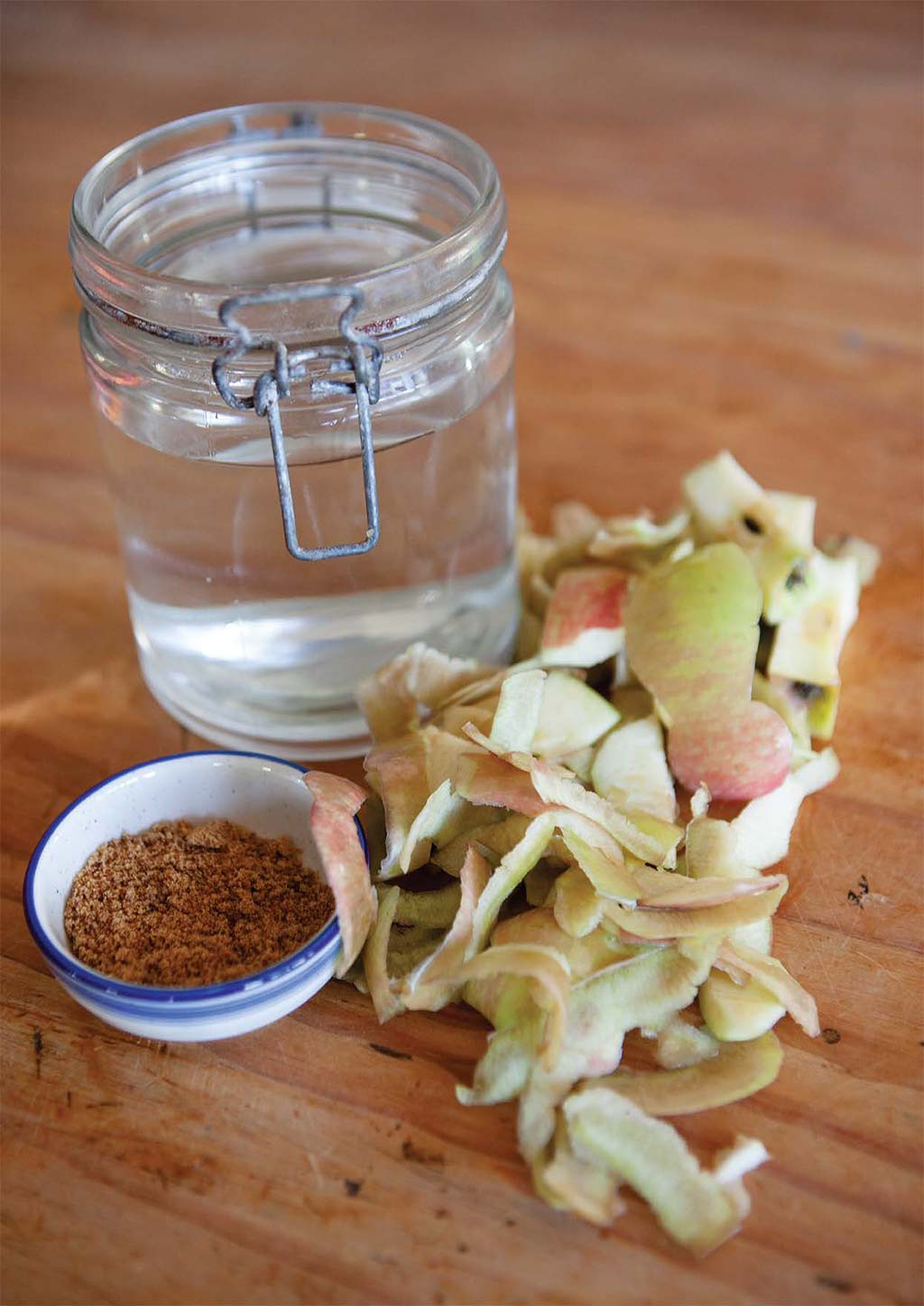Loaded with enzymes and probiotics, raw apple cider vinegar (ACV) is an essential item on your cooking and medicine shelves. Raw ACV can be expensive to buy, but making your own is simple and very cheap. ACV can be flavoured with herbs and other plants from your garden and it makes use of a waste stream (apple scraps) that is often thrown away or composted.
ACV is mineral-rich and contains calcium, magnesium, iron, manganese, copper, potassium, zinc, phosphorus, selenium and sodium. Vitamins A, B1, B2, B6, B12, C and E are also present. ACV is high in polyphenols (nutrients found in plant pigments that act as antioxidants), beneficial bacteria (probiotics) and active enzymes. Vinegars can act as a solvent, drawing additional minerals, vitamins and essential oils out of plant matter – which is why it’s the perfect medium in medicinal formulas.
Making ACV is easy, but your finished product takes time to create. The creation of vinegar – acetic acid – happens in two steps. In the first step, the sugar from apples is converted to ethanol by fermenting yeasts that are naturally present on the apple skin or in non-pasteurised apple juice. In the second step, the ethanol is converted by bacteria (Acetobacter sp.) and oxygen to acetic acid.
In practice, you prepare the solution (see the simple recipes) and leave it on a pantry shelf or kitchen bench for around six to eight weeks; and just watch the alchemy happen. Once you have made your ACV, you have several options for using your vinegar as it is, or taking it to the next level:

